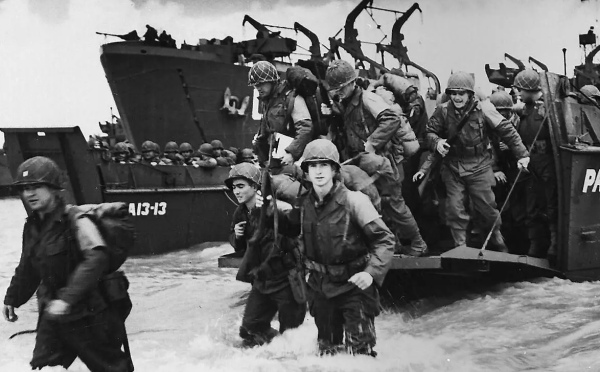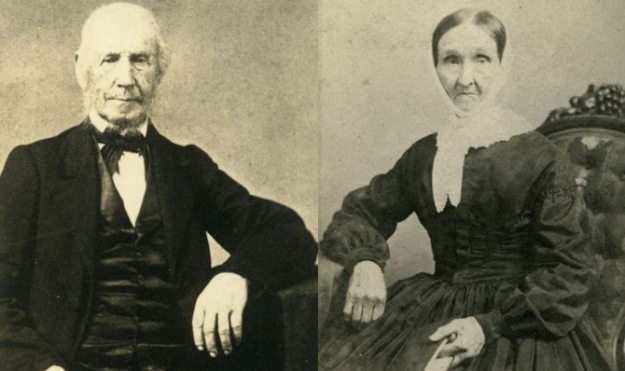July of 2013 we reviewed Spinner Publication’s fine “A Picture History of New Bedford, Volume #1 ~ 1602-1925.” It’s been a long time coming for us history buffs, but the time has come: the area’s leader in historical publications is proud to release the second volume, “A Picture History of New Bedford, Volume Two ~ 1925-1980.”
The first book covered “ancient” history in terms of the United States. Beginning with the time of Bartholomew Gosnold’s arrival at “Smoking Rocks” in 1602, we traveled through history from when the nation could count its European presence on one hand – explorers, trappers, homesteaders and other pioneers – to just a few years shy of the Great Depression.

1950 shot of Ray and Joe’s Delicatessen – you could order some soda or maybe a Black Cow ice cream float from “jerks.” (Spinner Publications)
Spinner Publications is “famous” for their photo archives – those great black and white photos that instantly transport us back to our childhood or young adulthood or to a time period we find fascinating and perhaps for some of us, a time that we wish we could have experienced first hand.
However, the past few years Spinner Publications have shown themselves to be fine writers, editors, and producers of historical books. In fact, I’d go so far as to say they have actually outshone these popular photos – no easy task. These photos are fantastic, but the factoids, anecdotes, adding the context, and other commentary make them far more intriguing and memorable.
Why is Spinner Publications so good at this sort of thing? They possess an almost unparalleled passion for history, particularly local history. You have to love what you are doing to spend the amount of time it takes to put together world class publications like they do. Many of these photos would be “meaningless” without the hours and hours of research that went behind that one short caption. It’s so much easier just to put a bunch of photographs together in a book and add a version of summarized history that has been done a hundred times before. That would be the easy way “out.”
This book is gargantuan. Not just in size – but in quality of images, content, editing and overall production. One of the particular aspects that resonated with me the most – as a history buff – is that the book goes well beyond the obligatory and/or popular topics. A serious effort went into balancing the lesser known with the popular. I’m reading history, especially local history all the time – I’ve been doing it for decades, and I continually came across things I did not know, or had never heard.
My “specialty” is 17th-19th century and with this particular time period of 1925-1980, I’ll admit I know a lot less. By 1980, I was only 10 years old, so these things are out of my personal experience, but this is a time period that plenty of locals can actually recall and reminisce about. In fact, don’t be surprised if you come across an image of yourself or someone you know!

The volume is characterized by high resolution photographs on high-quality, dense paper.
The 372 page book is broken into three chapters: 1925-1941 Stacks to Masts, 1942-1960 War & Peace, 1960-1980 Winds of Change. Each chapter has hundreds of gorgeously assembled pages, is positively jam-packed with crystal clear, high resolution photographs, and accompanied with balanced amounts of information. You don’t get so much that you get bored, you don’t get so little that you are left wondering.
The book is like hopping into a TARDIS and instantly visiting these years. You will see buildings, houses, neighborhoods, people and places that you grew up around. If you didn’t grow up around these things, you’ll get to see what was in the places you visit today. Since I’m downtown quite often and typically going up and down Union, Purchase and William Streets, it’s really fascinating to look at these images and say to myself “Hey, Cafe Arpeggio is there now!” Just looking at an image and wondering where it is exactly is pretty darn fun.
This book is a serious historical contribution. It’s as monumentally iconic as the 1918 Zephaniah W. Pease’s “History of New Bedford”, W.A. Greenough & Co’s editions of “New Bedford Directory: of the Inhabitants, Business Firms, Institutions, Streets, Societies,” the multi-volume “Representative Men and Old Families of Southeastern Massachusetts” by J.H. Beers and Co. and their ilk. In many ways, it combines all the best elements of these giants in historical publications in a superior way.
What separates Spinner’s publications from the others is the sheer volume of photographs adding visual to the text you are poring through. Often when reading those other books you wish there were photographs paired with the text, but unfortunately the photographs are sparsely spaced – perhaps every few pages. If something is mentioned, there’s a photograph of it. You will see the inside of textile mills, schools and businesses. You’ll see the waterfront in many of its incarnations. What Route 18 looked like before the J.F.K. Highway was built. Trolleys heading up and down Union Street. Various fashions and businesses that have come and gone.
You’ll see photographs of a time when Soccer and Boxing were the most popular sport’s activities. Soda fountains, ice cream parlors, amusement parks, and skating rinks. You’ll read about ethnic communities whose presence was once dominant, but have virtually disappeared: Russian Jews, Norwegians, Germans, Albanians (New Bedford once had the largest population of Albanians in the state), and Chinese.

The years between 1925-1980 are ones that many locals will recall from first-hand experience. (Spinner Publications)
There are simply too many topics and subjects to name. It’s astounding and a remarkable amount of work clearly went into this volume which will rightly take its place as the go-to historical reference for generations to come. This history may be of New Bedford, but it really is insight into America’s history. If you enjoy history of New Bedford, the South Coast, Massachusetts, the nation or even the world, you will thoroughly enjoy this masterpiece. In fact, you may want to by multiple copies – they make the perfect gift, but you will continually return to it so will want it nearby!
The 9″x11″ book is available in hard cover or soft cover. In addition, there are 1,000 signed cloth editions for sale – each is numbered, Smyth sewn (sewn through the fold), and covered with a heavy dust jacket. Want to order the book, more info or get a sneak peek inside? Head to Spinner Publication’s website.
For a glimpse at more images and info on the book, head to Spinner’s Facebook Page that they built specifically for the books. For more info on Spinner Publications, you can check out their Facebook, website or Flickr account.
On February 23rd, Spinner Publications will host a book signing event at the New Bedford Free Public Library from 6:00pm-9:00pm. You’ll meet publisher Joseph Thomas and authors Alfred Saulniers and Jay Avila who will give a presentation on the photograph and text research they did to develop this book.
 New Bedford Guide Your Guide to New Bedford and South Coast, MA
New Bedford Guide Your Guide to New Bedford and South Coast, MA


















Love this! I remember the deli next to the bus station! Awesome….love this articles!
Good Afternoon….My sisters and I grew up in NB …50’s. 60’s. We graduated from Holy Family..do you remember the Friday night dances at the YMCA? So much fun…no trouble….My sister and I (twins) spun the records…I think it was run by Arnie Bryden…does anyone remember these dances?????